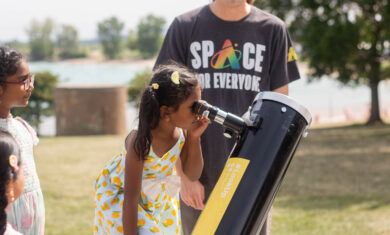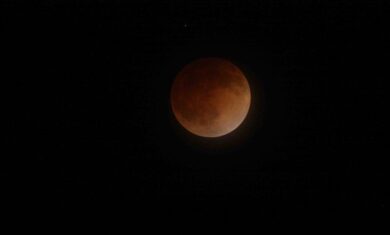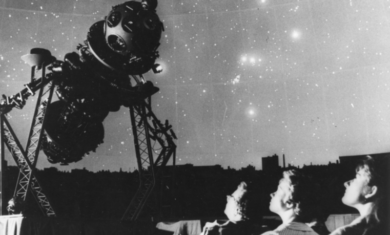The First Planetarium in Space
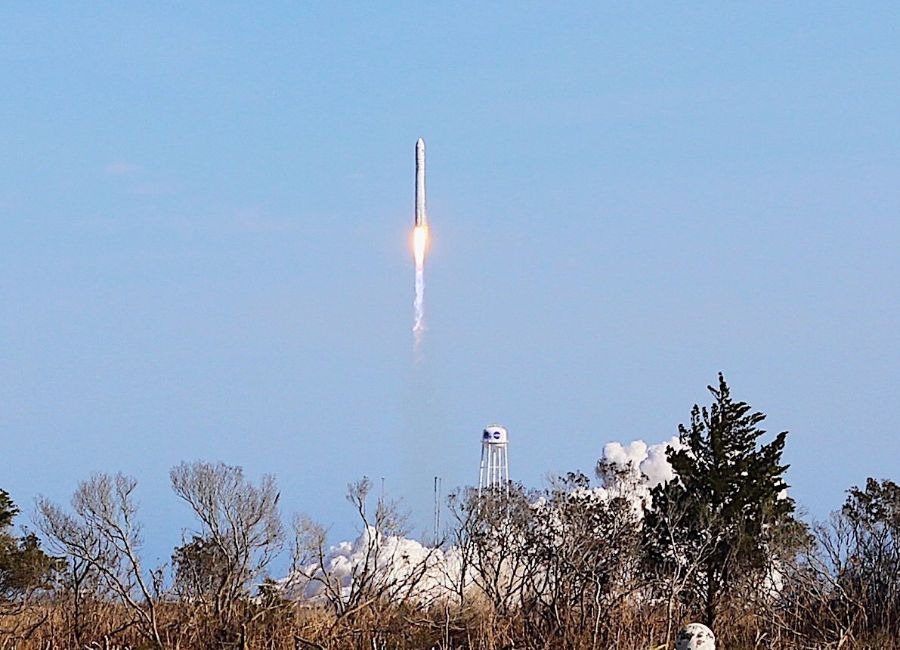
By Jesus Garcia (Electronics Design System Engineer and Educator) and Dr. Geza Gyuk (Astronomer).
On Wednesday, April 17, 2019, the Adler sent its first mission to space! This ambitious project was a collaboration between students, scientists, and volunteers from around Chicagoland.
Last spring, students from the ITW David Speer Academy, a public four-year charter high school in the Belmont Cragin neighborhood in Chicago, worked with Far Horizons Systems Engineer and Educator Jesus Garcia, to develop concepts for the Adler’s first “ThinSat.” ThinSats, the brainchild of nanosatellite pioneer Prof. Bob Twiggs, are very tiny satellites (think the size of a slice of bread), that are launched into space in an extremely low Earth orbit (ELEO)—only a couple of hundred kilometers up. At that low altitude, there is still enough drag that the satellite will come down to Earth in only a week. But in that week, a ThinSat will travel millions of miles around the Earth and experience the hard vacuum and high radiation of outer space.
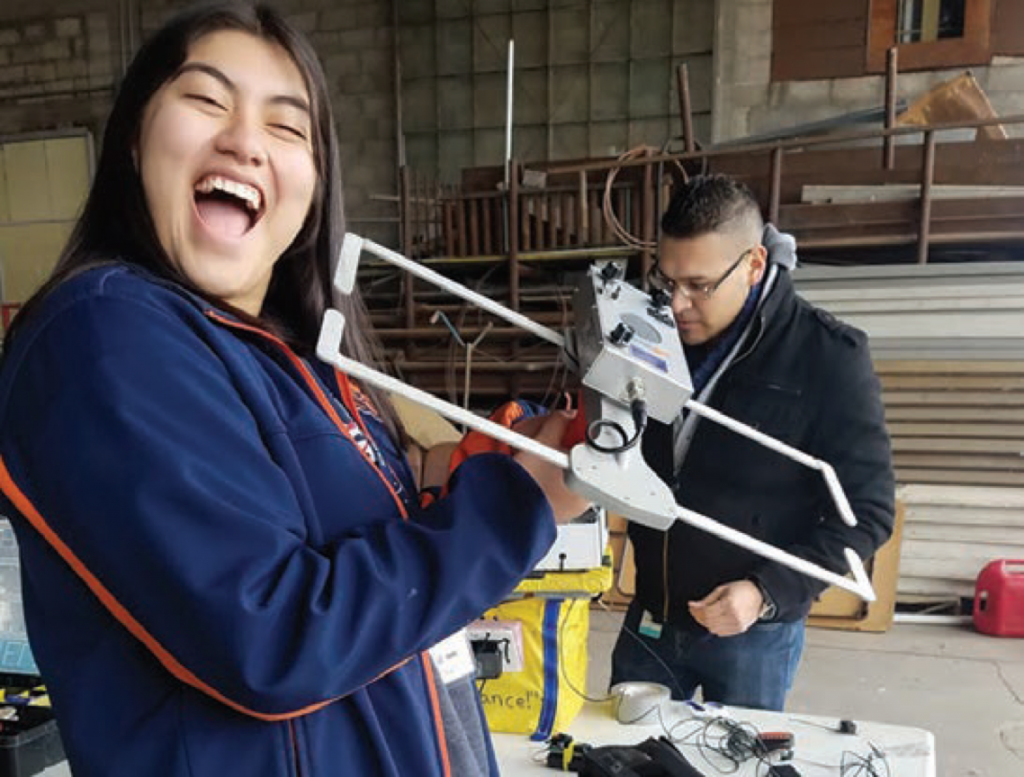
This collaboration between the Speer Academy and the Adler aims to increase participation of underrepresented minorities in the science, technology, engineering, and math (STEM) fields. Working alongside professional engineers and scientists over a period of twenty weeks, the students acquired the necessary skill-sets in electronic hardware, soldering, programming, and data analysis to aid in the development of the Adler’s first ThinSat. The team of students and Garcia settled on an ambitious goal of measuring the changing colors of light as seen by a satellite in orbit as it passes over different regions of the Earth. With these measurements, students will learn how to recognize different features of land and water just by studying the wavelengths of light they reflect—a crucial first step on the way to identifying similar features on the surfaces of exoplanets.
Not only did the interns develop their technical skills, but they also practiced science communication, presenting their work to the public in the Space Visualization Lab at the Adler Planetarium and to a large audience at ITW Headquarters.
Building on the concepts developed by the ITW Speer students, Adler’s Far Horizons team of engineers, scientists, and volunteers assembled a multiband photometer that will measure the brightness of the Earth in six different colors. A very similar device is being designed by students in the Adler’s NITELite program to measure the light coming from different types of streetlights in the Chicagoland area.
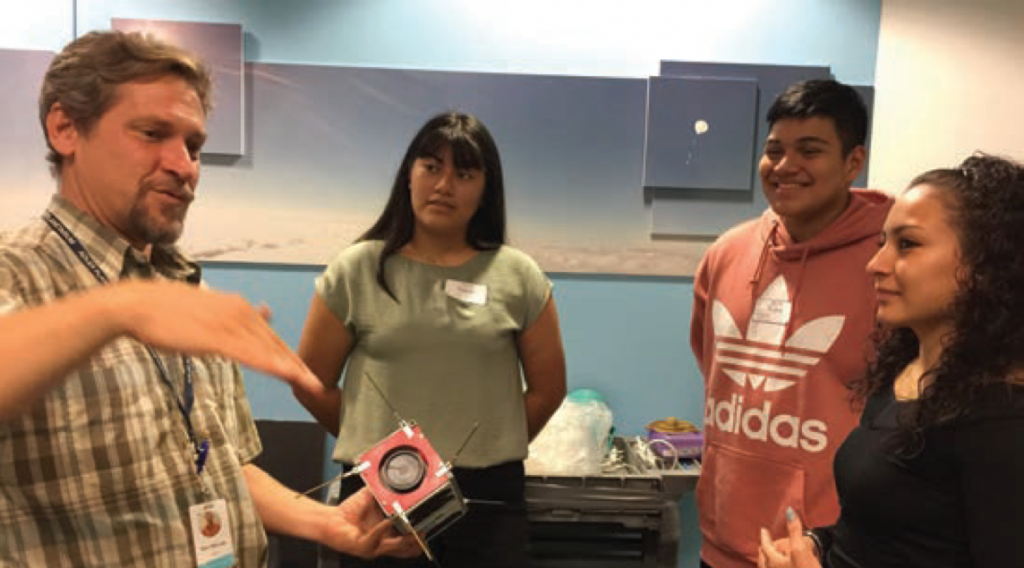
The Adler’s first mission to space, launched along with 83 other ThinSats from around the nation as a secondary payload on Northrop Grumman’s Antares 110 launch vehicle.
The Antares launched from Wallops Island, Virginia, as an International Space Station resupply mission. The ThinSats were attached to the 2nd stage of the rocket, which is purposely left in an ELEO so that it will burn up quickly. Once the main payload was safely on its way to the ISS, the ThinSats were deployed and spent a week flying independently.
Far Horizons is the Adler’s own space exploration program. Its mission has always been to bring real space exploration down to Earth and into the hands of students, volunteers, and the public. A particular strength of Far Horizons has been our ability to engage teens from diverse backgrounds. For more than a decade, we’ve designed and built experiments with participants and sent them to the edge of space aboard high-altitude balloons. Now, with ThinSats, we’ve finally made our long-awaited jump into space!
Much like Chicago weather, WiFi can be unpredictable. We couldn’t go live, but we did get this video! Congratulations to the scientists, volunteers, & students who made this possible—the #ThinSat is space-bound! #Antares @NASA_Wallops pic.twitter.com/eBuKRU50Dc
— Adler Planetarium (@AdlerPlanet) April 17, 2019




